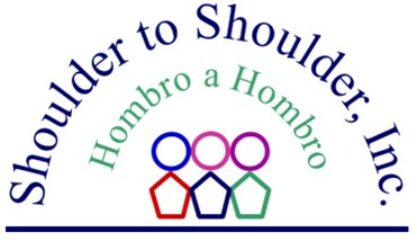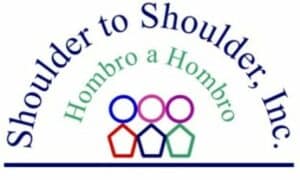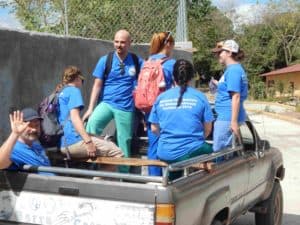
January 24, 2015
From what I heard, Buffalo, NY had about a thousand feet of snow this year. I would assume the nine graduate students and one professor from the University of Buffalo, School of Pharmacology experienced quite a shock last Monday when they arrived here in Honduras. They certainly did pick the best time of the year to come. They ended up at Shoulder to Shoulder’s clinic in Santa Lucia, one of the hottest, driest, and lowest spots in all of Honduras. The climate must have been a great shock, though perhaps a welcome one, to their bodies. The culture shock must have been pretty intense as well. They took two days to get to Santa Lucia from Tegucigalpa. They spent Monday night in a nice hotel in Siguatepeque about an hour and a half outside Tegucigalpa. The next day, however, was about five and one half hours over and down the mountains, four of which they traveled on the treacherous dirt roads, washed out and eroding. They arrived to be confronted with trickle showers, low power electricity, spotty and slow internet, the new ways of a new people, and everyone speaking Spanish.
Shoulder to Shoulder is excited to have the University of Buffalo here for the first time. The pharmacology school offers a unique brigade experience. They offered workshops with various groups like the pregnancy club in Magdalena where Laura and I met up with them. They were able to offer insight to the women relative to what medicines can and can’t be taken during pregnancy, how pharmacology works in health in general, preventative care strategies, etc. The doctors and nurses at the various clinics and health centers were impressed and pleased with the brigade work. The doctors and nurses, and even the health promoters, are so often overwhelmed dealing with large volumes of patients and emergencies that they don’t find the time for teaching prevention and home health care. The work Buffalo did was tremendously valuable and greatly appreciated.
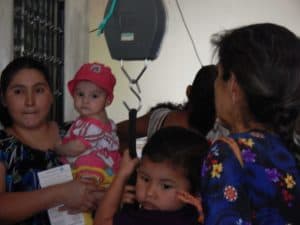
The students were thoroughly enjoying their cross-cultural, service experience. None of them spoke Spanish, though the interpreters were excellent. Many had been to foreign or developing countries in the past. Their leader student, Ciera, had been twice to the Dominican Republic on service trips. She hopes that this early commitment from Buffalo will be a long and meaningful one for the school. We hope so too. Speaking with one of the participants about how he was experiencing the culture and the people, he paused and thoughtfully reflected. He shared that so much of person’s lives in the US are consumed with the acquiring of things. Here people are much more present to other people. People really take sincere interest in one another, and things are just not so important.
We are certainly taking interest in you, Buffalo. You have so much to offer. We thank you for your generous, unselfish response. We will be looking forward to your return. Hopefully it will again be in January so you can all get away from the snow, ice, and cold.
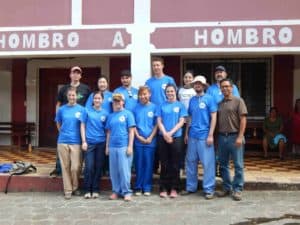
25 Years: The Dignity of Working Shoulder to Shoulder
 January 15, 2015
January 15, 2015
The 1969 war between Salvador and Honduras, sometimes referred to as the Soccer Wars or the Hundred Hours War, left many parts of Honduras bordering El Salvador isolated, with shortages of basic services and infrastructure. These effects last into the present day where, in the southern section of the department of Intibucá, services and infrastructure remain scarce and tenuous. In 1990, the small municipality of Santa Lucia suffered disproportionately the price of a war two decades past. Here there was no physician, no non-profits or relief agencies, no electricity, and the only water came from the community tap in the center of town.
Meanwhile at the University of Cincinnati, Dr. Jeff Heck, part of the junior faculty, was organizing a medical brigade to Honduras to be sponsored by Ruth and Daniel Castro from the Christian Medical and Dental Society of Honduras. Could any of the participants on that brigade really have known what they were getting into? Had they known, would they have gone? And what amazing things would spring forth from the innocence of their good will!! A team of twenty, including five physicians, slept on the floor at the school and municipal building. They worked from sunup to sundown and saw 4000 patients, assisted by the public health nurse, the only medical professional working in the area. The community asked them to return.

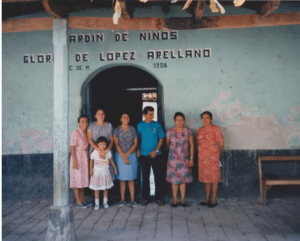
At this point, anything could have happened. The University of Cincinnati might have thought the project a folly and ended their support and funding. The project could have continued by way of sending brigades year after year to simply respond to physical needs. But what did happen was so much greater and so amazing. Relationships were forged, formed, and evolved, creating a synergy that profoundly transformed the lives of everyone committed to those relationships. In 1993, with money left over from a $1 million grant to study diarrhea among travelers to the tropics, construction on the first clinic began. A team of professional builders volunteered much of their time and talent, many of the building supplies were donated, and Chiquita Brands assumed the expense of shipping materials. Good will, service, caring, and the integrity of human relationship united to become a permanent site for healing and development.
After four or five years, Daniel and Ruth Castro suggested the name Shoulder to Shoulder, becoming interchangeable with Hombro a Hombro. Few organizations title themselves according to their philosophy. In extensive conversations among faculty at the university, among students and brigade participants, among community members in Cincinnati and Honduras, it was clear that this project would not survive or thrive save for the intricate participation of those served, the Hondurans themselves. The living of that philosophy was as much practical as it was ideal, given that so few from Cincinnati spoke Spanish and were only in Honduras once or twice a year. Whatever the motive, the philosophy secured the dignity of the persons served. Shoulder to Shoulder, Hombro a Hombro, became sustainable as Hondurans themselves took ownership of the service, care, and empowerment that has always identified its vision and mission.

Twenty-five years ago, a few professors, doctors, and medical students from the University of Cincinnati offered a hand of assistance to a desperately poor and oppressed people. They did so with respect, recognizing that Hondurans themselves would own and manage their health care and development. Shoulder to Shoulder was once small and from Cincinnati. Twenty-five years later, Shoulder to Shoulder/Hombro a Hombro, is big and from Honduras, Cincinnati, and the world. Shoulder to Shoulder once responded exclusively to the physical needs it encountered. Twenty-five years later, Shoulder to Shoulder/Hombro a Hombro, responds to the inherent dignity of all life and seeks to empower and develop relationships of liberation and justice.
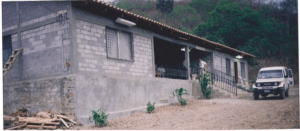
In tribute to Shoulder to Shoulder and in anticipation of the reunion brigade scheduled for May of this year, Dr. Jeff Heck reflects,
“Some of the best people I know have been involved with Shoulder to Shoulder from all walks of life, all with different perspectives, faiths and otivations. The majority have been motivated by a genuine concern for people left behind and have been willing to make great sacrifices on their behalf. Shoulder to Shoulder has done much to help physicians, nurses, dentists, and other health professionals restore their idealism that motivated them to join their professions in the first place. I count myself fortunate to have watched radical transformations in many people. Thus it is difficult to say who benefited the most: the Hondurans or the North Americans who came to ‘help’.”
All of this because twenty-five years ago, twenty people came to Honduras to offer some limited, medical service. Imagine!!
Scaling Mountains in San Marcos

December 3, 2014
My wife Laura and I spent yesterday mountain climbing. It wasn’t intentional. We were visiting San Marcos de la Sierra. From where the bus dropped us off we walked straight down, probably 1500 feet to the town center. A little later in the day we visited a second community of San Marcos called Aguacate, on the other side of the highway. We walked back up to the highway, then descended the other side, probably about 2000 feet. Returning to the highway at the end of the day to leave, we took the shortcut up, a harrowing path that most mountain goats would think twice about traversing.
The people who live in San Marcos face these difficult uphill climbs daily, both literally and figuratively. There is little to no income or jobs in San Marcos. Most families are subsistence farmers living hand to mouth. They are isolated in this most remote, rural, and rugged territory. Poverty means malnourishment, poor health, shorter life expectancy, more risk of child mortality, less education and little opportunity for success, and all of this while scaling mountains.
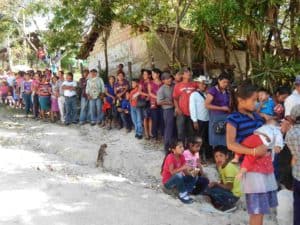
These people are easily lost and forgotten, even by the rest of Honduras. That is why what is happening with the Universidad Nacional Autónoma de Honduras (National Autonomous University of Honduras, UNAH) is something very special. When Laura and I arrived at the center of town, we saw an unusual sight. The presence of even a car or truck would have elicited special note, but here were three large buses from UNAH parked alongside the church. They had brought in the seventy plus students and faculty. Generally we think of brigades, medical or otherwise, as coming from the outside, foreigners with abundant foreign resources. But here were Honduran students and faculty responding in a generous and intense way to the needs of this small municipality and its people. The commitment of UNAH to the people of San Marcos clearly articulates a powerful message: You are not lost nor forgotten by the rest of Honduras.
There would only be one full day of the brigade, so it was no surprise to see the long lines outside the public school building where the doctors and nurses were. We’ve become somewhat acquainted with the medical brigade motif. But things here were different. The most obvious difference was that there were no translators. This allows for a deep sense of trust and respect, something that for all the best intentions of foreign brigades cannot be reproduced. We had already met the engineering students in the main plaza area of the town, discussing the town’s unique water problems and how they might be addressed. At the clinic area itself, in each of the examining areas, a law student or a lawyer was present for legal consults. Here were doctors, nurses, orthodontists, lawyers, engineers, teachers, biologists, and so many more. It seemed every profession discipline that could possibly assist this small town community was present. We even met a social worker. Laura and I are both social workers, and we had long since given up on meeting a Honduran one. It bought us great joy.
So why were all these professions present at a one day medical brigade? It seems the university’s commitment is way beyond the one day brigade. As the mayor of the town, whom we met with later in the day in Aguacate, told us, this is a “convenio” (covenant agreement) that will last for decades. This is not about giving a person a lift up the hill one time, leaving them off at the side of the road to wait for the bus, then scooting off to Tegucigalpa in your Land Cruiser. No, this is about commitment and building relationship. This is a partnership. The brigade was for a day, but the relationship is ongoing. They’ll come back next year for another day’s brigade. But over the course of the year, there will be a great deal of communication and ongoing work; the mayor with the university, the university with Shoulder to Shoulder, the health center of the town with the university, the various local associations with the university, and so on. Francisco Portillo, the social worker, explained it to us as an ongoing needs assessment and a continual search for creative resources; going up and down the hill.
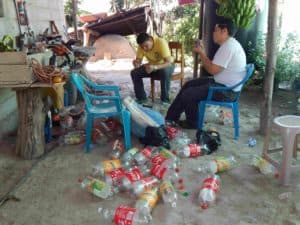
We had a great day climbing mountains. We thank Manuel, one of Shoulder to Shoulder’s health promoters, and Carlos, Shoulder to Shoulder’s health data collector, for guiding us around all day; Paola Barrientos, nursing department at UNAH, who has a ton of energy and is thoroughly dedicated to this project; Doctor Maricela Figueroa, one of the brigade leaders, who graciously shared the inclusive mission of their work; the mayor of San Marcos; and so many others.
…. and if there are tall mountains to climb, we’ll climb them together.

